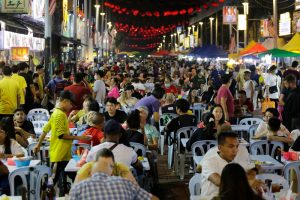As Christmas approaches, many grapple with Seasonal Affective Disorder (SAD), a type of depression linked to winter.
Seasonal Affective Disorder, often abbreviated as SAD, emerges as a significant mental health concern during the festive season. This phenomenon, also known as winter blues or holiday depression, tends to intensify as days grow shorter and colder.
What is Seasonal Affective Disorder?
Seasonal Affective Disorder (SAD) is a form of depression characterised by its recurrence in specific seasons, typically autumn and winter. The condition is marked by symptoms similar to major depression, including persistent low mood and a lack of interest in usual activities.
The underlying mechanisms of SAD are not fully understood, but it is thought to be related to reduced exposure to daylight during shorter winter days. This reduction in light can disrupt the body’s internal clock and negatively impact serotonin levels, a neurotransmitter associated with mood regulation.
The Nature of Seasonal Affective Disorder
The symptoms of SAD can range from mild to severe, and they often mimic those of other types of depression. Common symptoms include:
- Low Energy: People with SAD grapple with an overwhelming sense of fatigue and diminished energy levels, making even everyday tasks feel like an uphill battle.
- Mood Swings: Mood swings, irritability, and a general sense of unhappiness are hallmark signs of SAD. Individuals may also experience feelings of sadness and hopelessness.
- Sleep Disturbances: Sleep patterns can be disrupted, leading to either oversleeping (hypersomnia) or difficulty sleeping (insomnia).
- Changes in Appetite: SAD frequently triggers changes in appetite, including overeating and an increased craving for carbohydrates, which can contribute to weight gain.
- Social Withdrawal: Individuals with SAD withdraw from social activities due to a lack of motivation or energy, which can lead to feelings of isolation.
The Role of Light Sensitivity
One leading theory regarding the cause of SAD is related to reduced exposure to natural sunlight during the winter months. The limited daylight can disrupt the body’s internal clock and affect the production of neurotransmitters such as serotonin and melatonin, which play critical roles in regulating mood and sleep.
Consequently, light therapy has emerged as a common and effective treatment for SAD. Light boxes or lamps that emit bright, full-spectrum light simulate natural sunlight exposure and can help alleviate symptoms.
Who Is Vulnerable to SAD?
SAD is more prevalent in regions with shorter daylight hours and reduced sunlight during winter, particularly in northern latitudes. There also appears to be a genetic component, as individuals with a family history of depression or SAD are at a higher risk. Moreover, statistics indicate that women are more likely to be diagnosed with SAD than men, although it can impact individuals of any gender.
Reduced Sunlight and Serotonin Levels
A pivotal factor in the onset of SAD is the reduction of sunlight during autumn and winter. This decrease in daylight is linked to a drop in serotonin, a neurotransmitter that plays a crucial role in regulating mood.
The reduced sunlight can disrupt the normal functioning of serotonin, leading to depressive symptoms commonly associated with SAD. Furthermore, individuals with winter-pattern SAD often exhibit lower levels of serotonin during these months.
Disrupted Melatonin Levels
Melatonin, a hormone regulating the sleep-wake cycle, is also significantly affected by seasonal changes. In winter-pattern SAD, there’s an overproduction of melatonin, which can increase sleepiness and contribute to feelings of lethargy and depression.
Conversely, summer-pattern SAD may involve reduced melatonin levels, correlating with sleep disturbances and depressive symptoms during longer daylight hours. These alterations in melatonin levels are instrumental in disrupting the body’s normal daily rhythms, which can severely impact sleep, mood, and overall behaviour.
Vitamin D and Its Role
Vitamin D deficiency is another aspect that might exacerbate the symptoms of SAD, particularly in winter. Partly obtained from sunlight exposure, it is believed to promote serotonin activity. Hence, lower levels of sunlight in winter can lead to decreased vitamin D production. This further impacts serotonin levels and exacerbating depressive symptoms in individuals with SAD.
Diagnosis and Treatment
The diagnosis of SAD is typically made by a mental health professional based on a comprehensive assessment of an individual’s symptoms and their seasonal pattern. Several treatment options are available for managing SAD:
- Light Therapy: Light therapy involves the use of light boxes or lamps that mimic natural sunlight, effectively mitigating symptoms by regulating the body’s internal clock.
- Psychotherapy: Cognitive-behavioural therapy (CBT) and other forms of talk therapy can help individuals develop coping strategies, manage negative thought patterns, and address the challenges posed by SAD.
- Medication: In certain cases, healthcare providers may prescribe antidepressant medications to alleviate SAD symptoms.
- Lifestyle Changes: Engaging in regular exercise, maintaining a balanced diet, practising stress management techniques, and ensuring adequate sleep can all play a crucial role in alleviating SAD symptoms.
SAD’s Impact on Christmas Celebrations
As the Christmas season approaches, symbolizing a time of joy, celebration, and familial togetherness, the impact of SAD on individuals becomes increasingly poignant. The stark contrast between the festive atmosphere and the internal struggles faced by those with SAD can be particularly challenging. The societal pressures to participate in social gatherings, coupled with the pervasive atmosphere of merriment, often serve to deepen the sense of isolation and exacerbate stress for individuals grappling with SAD.
This incongruence between the external expectations of happiness and the personal experience of depressive symptoms highlights the complex and profound influence of SAD. It especially manifests during a period conventionally marked by happiness and social engagement, bringing to light the nuanced ways in which SAD affects individuals during what is broadly considered the most wonderful time of the year.
References
- Magnússon, A., & Partonen, T. (2005, August 1). The Diagnosis, Symptomatology, and Epidemiology of Seasonal Affective Disorder. CNS Spectrums. https://doi.org/10.1017/s1092852900019593
- Seasonal Affective Disorder. (n.d.). National Institute of Mental Health (NIMH). https://www.nimh.nih.gov/health/publications/seasonal-affective-disorder
- Rosenthal, N. E., Sack, D. A., Gillin, J. C., Lewy, A. J., Goodwin, F. K., Davenport, Y. B., Mueller, P. S., Newsome, D. A., & Wehr, T. A. (1984, January 1). Seasonal Affective Disorder. Archives of General Psychiatry. https://doi.org/10.1001/archpsyc.1984.01790120076010
- Partonen, T., & Lönnqvist, J. (1998, October 1). Seasonal affective disorder. The Lancet. https://doi.org/10.1016/s0140-6736(98)01015-0













